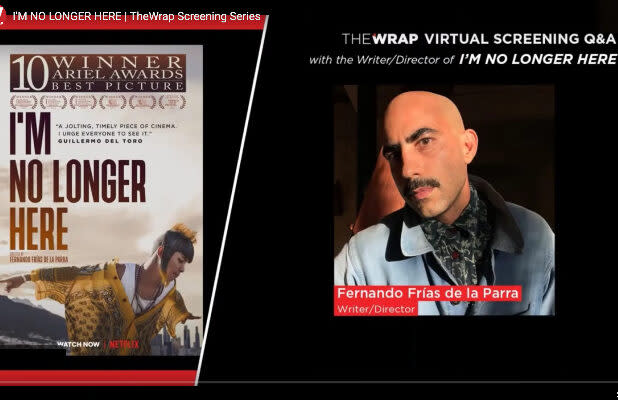Director Fernando Frias de la Parra Celebrates Youth Subculture in ‘I’m No Longer Here’

“I’m No Longer Here” director Fernando Frias de la Parra said he thrives on exploring cultural clash, and nothing fit that bill more than making a movie about a teen subculture that built its society around cumbia, a bouncy, traditional music and dance genre born in Colombia. The film takes on a wholly different tone and significance when the music is deliberately slowed down by the youthful dance crews, who meet and compete on the mean streets of the northern Mexico city of Monterrey.
Frias recalls hearing the music while growing up in Mexico. “It was dark but joyful at the same time,” he told TheWrap’s Steve Pond. “When I listened to the rebajada, the slow-down, I was fascinated, it becomes nostalgic.”
For Frias, the idea of watching a slow dance to the reinvented cumbia music represented a bittersweet symbol of youth often lost too soon to poverty and violence.
“It somehow represents this idea of fighting the passing of time, wanting something to last longer, because there’s a lack of opportunities, there’s no social upward mobility whatsoever,” Frias said. “I like the idea of establishing this analogy between the slowing down and the kids knowing that the future is not looking bright at all.”
Also Read: From Welder to Actor - The Unlikely Rise of 'I'm No Longer Here' Star Juan Daniel Garcia
The film focuses on a cumbia crew that calls themselves Los Terkos, as well as the personal journey of the group’s leader, 17-year-old Ulises, who must flee to the United States after witnessing a gang shooting. The members of Los Terkos are all non-actors, including Juan Daniel Garcia (Ulises), who defiantly dances his way through the film in the baggy, colorful clothes and sculpted haircut that is an integral part of the subculture.
Garcia not only was a non-actor, but he was also a non-dancer when he came to the cast, Frias said. Moreover, he revealed partway into the filming that he had broken both legs as a child so he needed a lengthy warm-up and a lot of ice to make it through his many solo dance scenes.
Frias said choosing to work with a non-professional cast posed its problems, particularly since he was dealing with kids burdened with lack of resources, work commitments and family problems. “There were a lot of trust issues,” he said.
He added that he might go to a dance party and find a promising teen, ask for his or her number only to hear, “I don’t have a number.” He told the story of a young man who showed up every day for a couple of weeks, insisting he wanted to be part of the film, “then he took our camera and never came back.”
Also Read: Oscars International Entries Are Close to New Record, But Voters Can't See Them All Yet
Despite the problems, Frias called casting and creating the Terkos “the part of the process that will live forever in my heart because it was unique for every role. Behind every one of these kids, these characters, there’s a story of how we both found each other.”
The film is set in 2010, and Pond asked Frias if the cumbia subculture still exists today. “I think cumbia will always be a part of Monterrey, and Mexico …always it’s in the heart of the people there,” Frias said. “But that style of dressing like that, the hair, dancing like that — yeah, it’s pretty much gone.”
However, he added, he has seen a resurgence of the culture on social media since the film has launched. “I think this film is bringing it back a little bit because I am seeing crazy things that I never could have imagined,” Frias said with a laugh.
Read original story Director Fernando Frias de la Parra Celebrates Youth Subculture in ‘I’m No Longer Here’ At TheWrap

